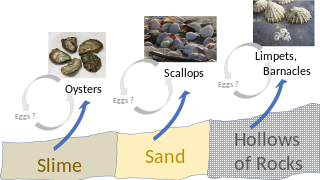
Spontaneous generation is a superseded scientific theory that held that living creatures could arise from nonliving matter and that such processes were commonplace and regular. It was hypothesized that certain forms, such as fleas, could arise from inanimate matter such as dust, or that maggots could arise from dead flesh. The doctrine of spontaneous generation was coherently synthesized by the Greek philosopher and naturalist Aristotle, who compiled and expanded the work of earlier natural philosophers and the various ancient explanations for the appearance of organisms. Spontaneous generation was taken as scientific fact for two millennia. Though challenged in the 17th and 18th centuries by the experiments of the Italian biologists Francesco Redi and Lazzaro Spallanzani, it was not discredited until the work of the French chemist Louis Pasteur and the Irish physicist John Tyndall in the mid-19th century.
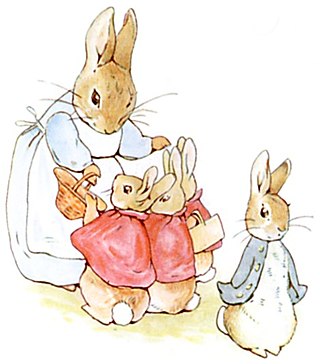
A picture book combines visual and verbal narratives in a book format, most often aimed at young children. With the narrative told primarily through text, they are distinct from comics, which do so primarily through sequential images.
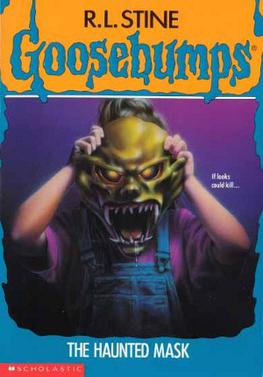
The Haunted Mask is the eleventh book in the original Goosebumps, the series of children's horror fiction novels created and written by R. L. Stine. The book follows Carly Beth, a girl who buys a Halloween mask from a store. After putting on the mask, she starts acting differently and discovers that the mask has become her face; she is unable to pull the mask off. R. L. Stine says he got the idea for the book from his son who had put on a Frankenstein mask he had trouble getting off.
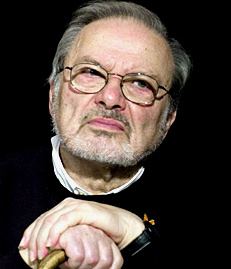
Maurice Bernard Sendak was an American author and illustrator of children's books. He became most widely known for his book Where the Wild Things Are, first published in 1963. Born to Polish-Jewish parents, his childhood was affected by the death of many of his family members during the Holocaust. Sendak also wrote works such as In the Night Kitchen, Outside Over There, and illustrated many works by other authors including the Little Bear books by Else Holmelund Minarik.

The God of Small Things is a family drama novel written by Indian writer Arundhati Roy. It is a story about the childhood experiences of fraternal twins whose lives are destroyed by the "Love Laws" prevalent in 1960s Kerala, India. The novel explores how small, seemingly insignificant occurrences, decisions and experiences shape people's behavior in deeply significant ways. The novel also explores the lingering effects of casteism in India, lending a culturally-specific critique of British colonialism in India. It won the Booker Prize in 1997.

Mr Benn is a character created by David McKee who originally appeared in several children's books. The first, Mr Benn Red Knight, was published in 1967, followed by three more; these became the basis for an animated television series of the same name originally transmitted by the BBC in 1971 and 1972.

David John McKee was a British writer and illustrator, chiefly of children's books and animations.

Hawaii is a novel by James A. Michener published in 1959, the year that Hawaii became the 50th U.S. state. It has been translated into 32 languages.

SimPark is a 1996 video game by Maxis. The object of the game is to cultivate and manage a successful park. Similar to SimTown, it is targeted more towards children than the average player. SimPark attempts to show the importance of ecological balance. It could well be considered a 'lite' version of SimIsle.

Everyone Poops is the title of US editions of the English translation of Minna Unchi (みんなうんち), a Japanese children's book written and illustrated by the prolific children's author Tarō Gomi and first published in Japan by Fukuinkan Shoten in 1977 within the series Kagaku no Tomo Kessaku-shū.

Star jelly is a gelatinous substance sometimes found on grass and less commonly on the branches of trees. According to folklore, it is deposited on the Earth during meteor showers. It is described as a translucent or grayish-white gelatin that tends to evaporate shortly after having "fallen". Explanations have ranged from it being the remains of frogs, toads, or worms, to the byproducts of cyanobacteria, to being the fruiting bodies of jelly fungi or masses of amoeba called slime molds. Nonbiological origins proposed for instances of "star jelly" have included byproducts from industrial production or waste management. Reports of the substance date back to the 14th century and have continued to the present.

Slimer, originally referred to as "Onionhead" and sometimes "the Mean Green Ghost" and "Ugly Little Spud", is a character from the Ghostbusters franchise. He appears in the films Ghostbusters (1984), Ghostbusters II (1989), the remake Ghostbusters (2016), and Ghostbusters: Frozen Empire (2024), in the animated television series: The Real Ghostbusters, Slimer! and Extreme Ghostbusters, and in the video games: Ghostbusters: The Video Game (2009), Beeline's Ghostbusters (2013), Ghostbusters: Spirits Unleashed (2022) and Ghostbusters: Rise of the Ghost Lord (2024). Slimer was voiced by Ivan Reitman and Adam Ray in the films and by Frank Welker in the animated series. In The Real Ghostbusters, he is the Ghostbusters' mascot and friend.
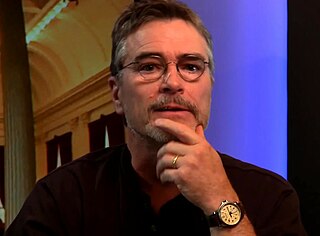
Thomas Edward Bodett is an American author, voice actor, woodworker and radio personality, primarily as a host, correspondent and panelist for a number of shows that air on National Public Radio (NPR). Since 1986, he has been the spokesman for the motel chain Motel 6, ending commercials with the phrase, "I'm Tom Bodett for Motel 6, and we'll leave the light on for you."

Where's My Cow? is a picture book written by Terry Pratchett and illustrated by Melvyn Grant. It is based on a book that features in Pratchett's Discworld novel Thud!, in which Samuel Vimes reads it to his son.
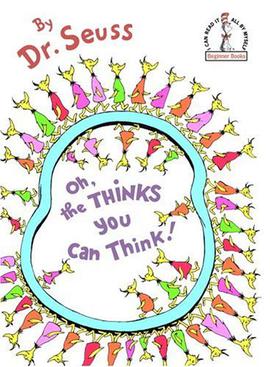
Oh, the Thinks You Can Think! is a children's book written and illustrated by Theodor Geisel under the pen name Dr. Seuss and published by Random House on August 21, 1975. The book is about the many amazing 'thinks' one can think and the endless possibilities and dreams that imagination can create. The book's front cover depicts forty-seven unknown bird-like creatures walking around on a cyan circle.
Stephen Cole is an English author of children's books and science fiction. He was also in charge of BBC Worldwide's merchandising of the BBC Television series Doctor Who between 1997 and 1999 and as executive producer on the Big Finish Productions range of Doctor Who audio dramas.

Grossology is a Canadian animated action-adventure television series produced by Nelvana and based loosely on the non-fictional children's book series of the same name by Sylvia Branzei.

Gooflumps is a two-part parody book series written in 1995 by Tom Hughes under the pseudonym of R. U. Slime. The books are parodies of the Goosebumps series by R. L. Stine. Both books were released simultaneously in 1995 by Random House, Inc. Each book had a tongue-in-cheek author's photo of Hughes upside down with wild, unkempt hair as "R.U. Slime".
The Wicked Years is a series of novels by Gregory Maguire that present a revisionist take on L. Frank Baum's The Wonderful Wizard of Oz, its 1939 film adaptation, and related books.
"As a dog returns to his vomit, so a fool repeats his folly" is an aphorism which appears in the Book of Proverbs in the Bible — Proverbs 26:11, also partially quoted in the New Testament, 2 Peter 2:22. It means that fools are stubbornly inflexible and this is illustrated with the repulsive simile of the dog that eats its vomit again, even though this may be poisonous. Dogs were considered unclean in Biblical times as they were commonly scavengers of the dead and they appear in the Bible as repugnant creatures, symbolising evil. The reference to vomit indicates excessive indulgence and so also symbolises revulsion.















